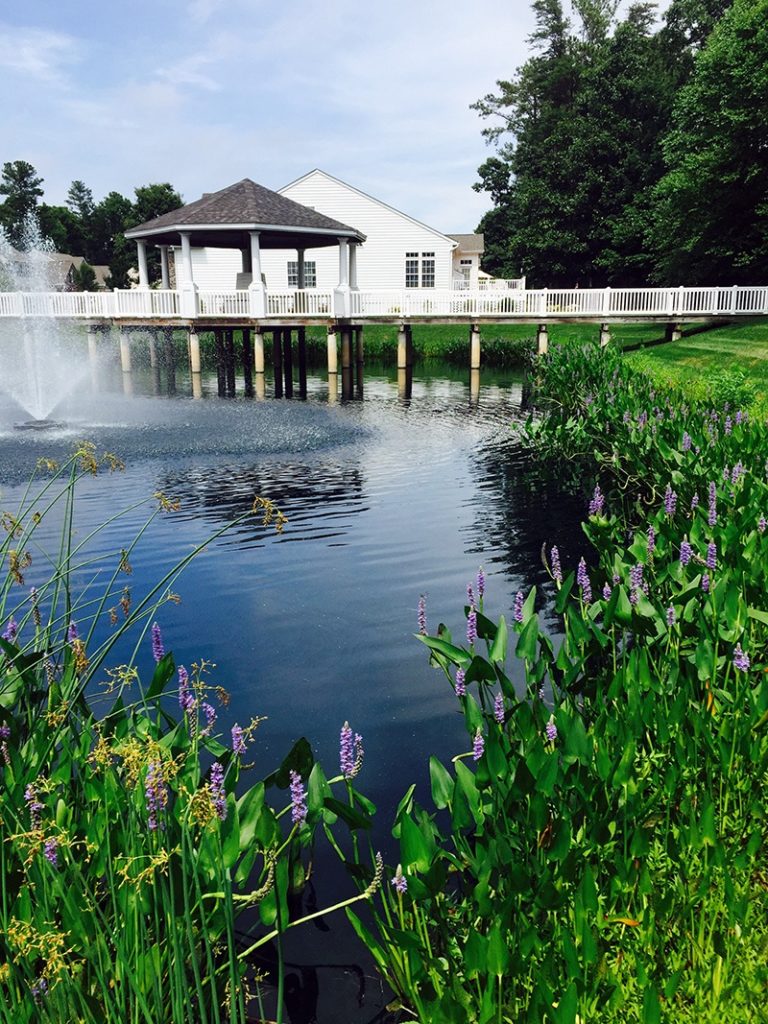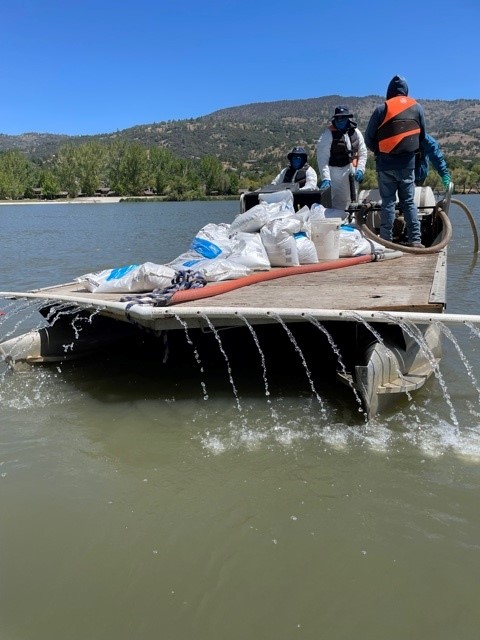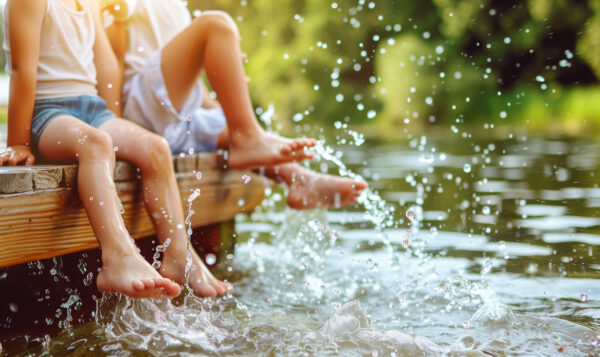

The Management of Man-made Lakes and Stormwater Ponds
Let’s face it—no one wants to look at an algae-filled, stinky waterbody, much less live near it. That is the number one complaint of prospective clients that I encounter. Throughout my career managing lakes and ponds in urban environments, I’ve learned that educating my clients about common tendencies exhibited by our waterbodies and then jointly implementing the appropriate remedies is the key to maintaining a beautiful and healthy aquatic ecosystem.
Despite the unique effects that our nation’s diverse geography and climate have on our waterbodies, there are a few common threads that unite our water resources in urban areas. In many states, particularly those out west, the majority of our small lakes and ponds were man-made within the last 60 years for aesthetic value or recreational use. Generally, these waterbodies are quite shallow with an average depth of less than 15 feet. In addition, these waterbodies were typically built to receive stormwater runoff from the surrounding urban landscape, which brings with it excess sediment and organic matter. Over time, these shallow waterbodies have lost valuable depth and become “nutrient-polluted,” meaning they are at a greater risk for aquatic weeds, harmful algal blooms, overwhelming odors and dangerous flooding. As an Aquatic Biologist, it is my responsibility to help reverse this negative cycle by removing the unwanted sediment and balancing nutrient levels so that they can no longer cause algae and poor water quality conditions.
Stormwater Basin Restoration
When sediment and organic materials such as leaves, pet waste and lawn clippings enter our waterbodies, they eventually sink to the bottom, degrade and form a nutrient-rich layer of muck. Left unmanaged, this layer will continue to build and fuel additional water-quality issues such as algal blooms and toxic cyanobacteria. While this process is often natural, some practical steps can be taken to help reduce the runoff inputs that contribute to the nutrient loading. The periodic physical removal of organic materials through hydro-raking can have positive short-term impacts. If such maintenance removal has been neglected for a long time, however, draining and cleaning out your waterbody with dredging equipment such as an Aquamog or hydro-rake may be the most effective option to address muck accumulation and start fresh with a proactive management plan.

Proactive lake and pond management is crucial to help preserve the health, beauty and depth of your waterbody. A proactive plan doesn’t just address the conditions in the water, it also looks at the surroundings. An excellent long-term remedy is stabilizing your shoreline to prevent erosion and intercept pollutants before they can enter the waterbody. Shorelines can be stabilized using an array of effective solutions depending on your unique needs. The most premium option is a patented woven mesh technology called SOX, which integrates seamlessly into the aesthetics of the property.
A typical water-quality complaint is usually the result of an overabundance of planktonic algae. Algae are the base of the aquatic food web and a fact of life, unless you are trying to manage a pool. If you desire a natural lake or pond, you will need to accept some level of planktonic algae as an unavoidable component. Still, you can adjust their environment and improve water quality through biomanipulation and/or nutrient remediation (and sometimes referred to as flocculation).

The primary goal of biomanipulation is the reduction of nutrients. The most impactful and lasting method is to utilize beneficial aquatic plants. Not only do native aquatic plants bring about ecological diversity, they also compete for resources that would have otherwise gone towards algal growth. In addition, plants have a stabilizing effect and can settle suspended particles that drive up turbidity. The concept of biomanipulation is simple, but the correct implementation is very complex and a professional should be consulted. While aquatic plants are typically a healthy complement to your waterbody, it is easy to fall into the numerous pitfalls that await the inexperienced layperson. For instance, selecting the wrong species or even an invasive one can easily create new problems or even make a bad situation worse. Furthermore, like any garden, aquatic plants need to be managed, so regular maintenance is necessary.

The process of nutrient remediation, on the other hand, helps remove or settle excess nutrients in the water column. These suspended particles can take a variety of forms, whether it is algae, fine clay or silt particles, or even bacteria colonies, and you need to identify what it is you are trying to target. Typically, products like Phoslock, Alum and Biochar will act like a magnet, attracting oppositely-charged particles and converting them to forms that can no longer impact water quality conditions. These processes are widely used in water treatment plants and date back to times as early as the ancient Egyptians. Today there are many products and technologies available in the market, and selecting the appropriate one is best left to a professional due to its various properties and functions. You should expect them to jar-test a few different products and then base their selection upon the optimal results.
As a lake and pond manager in an urban area, water-clarity issues are the ones I most often encounter. Many different factors can negatively affect water quality, which is why the first step in our restoration process is a comprehensive water analysis to gather the information necessary to properly diagnose and remedy water quality imbalances. These analyses consider many parameters such as temperature, dissolved oxygen, pH, nutrient levels and, if possible, algae composition.
No matter what your lake or pond goals are, working with a professional will ensure the appropriate solution is identified for your water quality issues and help you avoid wasting time and money on ill-conceived or misguided remedies that could delay you from reaching your management goals or cause further damage.
WHO WE ARE
SOLitude Lake Management is a nationwide environmental firm committed to providing sustainable solutions that improve water quality, enhance beauty, preserve natural resources and reduce our environmental footprint. SOLitude’s team of aquatic resource management professionals specializes in the development and execution of customized lake, stormwater pond, wetland and fisheries management programs that include water quality testing and restoration, nutrient remediation, algae and aquatic weed control, installation and maintenance of fountains and aeration systems, bathymetry, shoreline erosion restoration, mechanical harvesting and hydro-raking, lake vegetation studies, biological assessments, habitat evaluations, and invasive species management. Services and educational resources are available to clients nationwide, including homeowners associations, multi-family and apartment communities, golf courses, commercial developments, ranches, private landowners, reservoirs, recreational and public lakes, municipalities, drinking water authorities, parks, and state and federal agencies. SOLitude Lake Management is a proud member of the Rentokil Steritech family of companies in North America.









